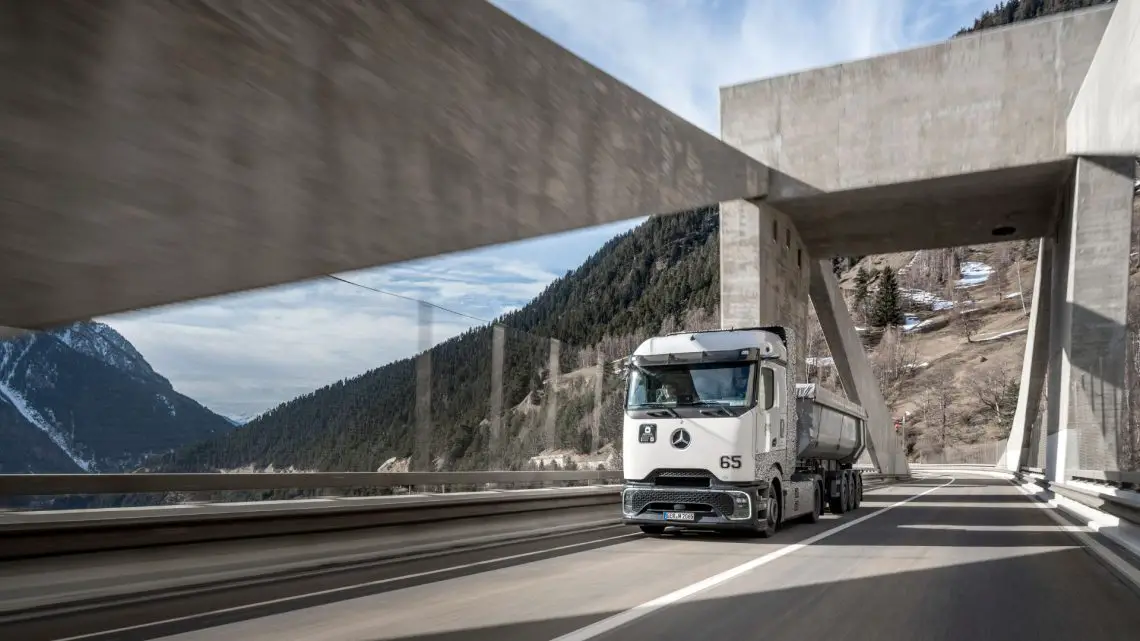
Hydrogen Trucks That Outperform Diesel? Daimler’s Game-Changing GenH2
March 26, 2025Pioneering Liquid Hydrogen for Heavy Transport
Daimler Truck is setting a new benchmark in sustainable transportation with its groundbreaking advancements in liquid hydrogen fuel cell technology. Over the past year, its Mercedes-Benz GenH2 Truck prototypes have undergone rigorous performance testing, signaling a major leap toward commercial viability for hydrogen-powered heavy-duty vehicles. Within the next few years, these innovations are poised to redefine long-haul freight, a sector notorious for its substantial carbon footprint.
Inside the Technology: How Liquid Hydrogen Powers the GenH2 Trucks
Unlike gaseous hydrogen, Daimler has chosen liquid hydrogen for its trucks to maximize efficiency and scalability. The key lies in its compositional density. Liquid hydrogen, stored at cryogenic temperatures of -253°C, enables a significantly higher energy density compared to its gaseous counterpart. This allows the trucks to carry larger fuel volumes, translating into extended operational ranges that exceed 1,000 kilometers on a single fill. Such performance matches or even surpasses existing diesel solutions, making hydrogen a competitive option for long-haul transport.
Advanced testing revealed more than just long-range promise. The trucks integrate a suite of cutting-edge components, including an optimized fuel cell, cryogenic tanks, an e-axle, and a high-voltage battery for energy recuperation during descents. These features work together seamlessly under the Predictive Powertrain Controls system, which adjusts power usage based on real-time topographical data.
The trucks also benefit from a simplified refueling system. Daimler recently succeeded in its first liquid hydrogen refilling trials, featuring 40-kilogram tanks mounted on either side of the vehicle chassis. Not only do these tanks maintain cryogenic conditions for extended roadway storage, but the entire refueling process is designed to mirror current diesel practices to ensure minimal disruption for operators.
Testing Under Extreme Conditions
To ensure reliability under demanding conditions, Daimler recently took its GenH2 Trucks to the Simplon Pass in Switzerland. These tests challenged the trucks with rigorous uphill climbs, steep descents, and icy mountain roads. Across 14 days, the vehicles logged over 6,500 kilometers, traversing a total vertical climb of 83,000 meters.

Image Credit: Daimler Truck
Each truck operated at a full gross weight of 40 tons, navigating gradients between 10-12%. Despite the intense conditions, the vehicles demonstrated exceptional performance, giving Daimler engineers critical data to optimize propulsion, cooling systems, and overall energy efficiency.
Dr. Rainer Müller-Finkeldei, Daimler’s Head of Product Engineering for Mercedes-Benz Trucks, emphasized that the testing sessions prove the technology’s readiness for commercial roll-out. “The challenging conditions allowed us to simulate real-world scenarios and refine the technology further. Liquid hydrogen is proving its potential to enable heavy-duty transport without compromise,” he said.
Building Strategic Momentum with EU Support
Scaling this innovation into a full-fledged transport solution will require more than technological breakthroughs; it demands significant infrastructure investments. Daimler, alongside industry players such as Shell, TotalEnergies, and BP, is actively contributing to the build-out of hydrogen refueling stations across Europe, ensuring strategic transport corridors are hydrogen-ready.
This coordinated infrastructure effort pairs well with financial backing from governments and institutions. The German Ministry for Digital and Transport, along with European Union hydrogen programs, has provided Daimler with €226 million to accelerate its hydrogen goals. This funding supports small-series production of 100 hydrogen trucks for deployment by the end of 2026. Final assembly of these trucks will occur at Daimler’s Wörth facility, with critical fuel cell components supplied by cellcentric, a pilot production facility based in Esslingen.
The European Union’s financial support also facilitates feasibility studies surrounding hydrogen supply chains and expands production capabilities. This lays the groundwork for scaling truck manufacturing and ensuring green hydrogen adoption at a competitive price point.
Impact on Heavy Transport and the Environment
The introduction of liquid hydrogen-powered trucks has vast implications for decarbonizing the heavy transport sector. Freight trucks are among the most polluting vehicles on the road, often operating for hundreds of thousands of kilometers annually. Liquid hydrogen not only represents a viable solution to reduce emissions but also counteracts range limitations posed by other zero-emission vehicles, like battery-powered electric trucks.
Further, liquid hydrogen’s transportable nature positions it as an energy source that can bridge geographic and seasonal gaps in renewable energy production. This versatility ensures it continues to gain traction in areas where battery electrification struggles with cost and range barriers.
Looking Ahead
The roadmap for liquid hydrogen adoption is becoming increasingly tangible. Daimler’s timeline forecasts small-scale roll-out by late 2026, aiming to serve an array of industry needs from logistics to construction. By the beginning of the next decade, mass production is expected to follow, contingent on the development of international refueling infrastructure and green hydrogen supply networks.
While challenges remain, particularly in cost reductions for hydrogen fuel, Daimler’s commitment to liquid hydrogen represents a vital step toward sustainable solutions in transportation. Its proactive collaboration with infrastructure providers, government stakeholders, and industry partners showcases a holistic approach to reimagining heavy transport.
This new wave of innovation not only meets industry demands but brings society a step closer to a carbon-neutral environment. With liquid hydrogen technologies breaking barriers, the promise of clean, scalable, and efficient transportation has never been more within reach. For operators, regulators, and customers alike, this development signals an era where the logistics industry can harmonize profitability with environmental responsibility.



 With over 15 years of reporting hydrogen news, we are your premier source for the latest updates and insights in hydrogen and renewable energy.
With over 15 years of reporting hydrogen news, we are your premier source for the latest updates and insights in hydrogen and renewable energy.
Who is the manufacturer of the fuel cell? Who is bildung the fueling Station and where can such Station be seen?
Thank you for your answers.
Wgraaffus@gmail .com